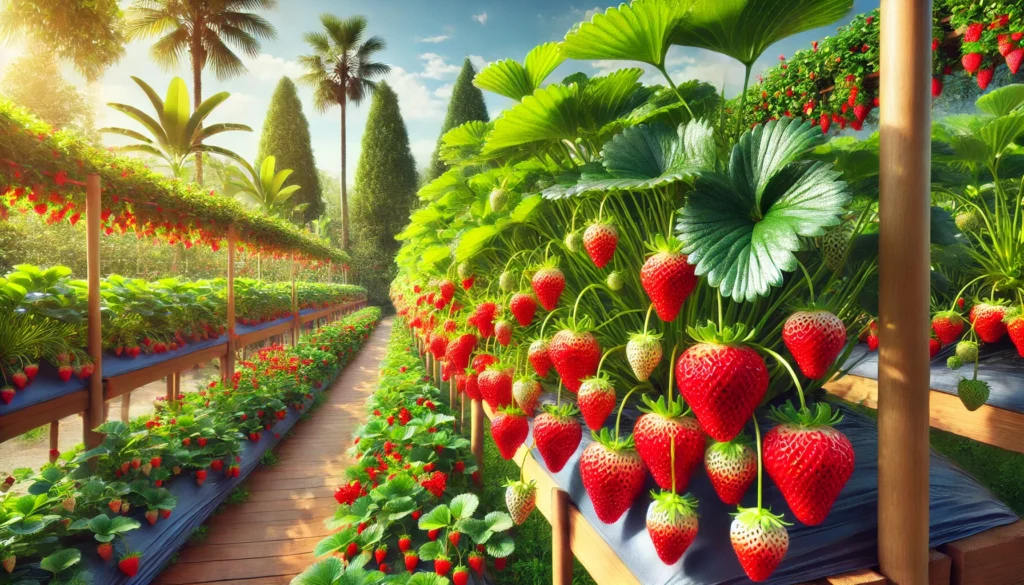
How to Grow Sequoia Strawberry Plants: A Complete Guide to Delicious and Healthy Harvests
Imagine biting into a sweet, juicy strawberry, freshly picked from your own garden. 
But growing Sequoia strawberries isn’t as simple as planting any strawberry variety. Whether you’re a seasoned gardener or just starting out, understanding the specific needs of Sequoia strawberry plants is key to ensuring a fruitful harvest. In this guide, we’ll walk you through every step—from planting to harvesting—so you can grow your own thriving Sequoia strawberry patch and enjoy an abundance of homegrown berries all season long.
Ready to cultivate your perfect strawberry garden? Keep reading for expert tips and actionable advice to get started!
Table of Contents
ToggleUnderstanding Sequoia Strawberries 
Sequoia strawberries are a fantastic choice for home gardeners and enthusiasts looking for an easy-to-grow, high-yield variety that produces sweet, juicy berries throughout the growing season. Known for their resilience and adaptability, these strawberries are perfect for both beginners and seasoned gardeners. Here’s what you need to know to grow them successfully!
What Are Sequoia Strawberries?
Sequoia strawberries are a type of everbearing strawberry, meaning they produce fruit multiple times during the year, typically in spring, summer, and fall. These berries are known for their rich flavor and large size, making them a favorite for fresh eating, desserts, or even homemade jams.
What sets Sequoia apart is its ability to thrive in a variety of climates. Whether you’re in a cooler region or a warmer area, Sequoia strawberries can handle it, making them a great choice for most gardeners.

Key Benefits of Growing Sequoia Strawberries 
- High Yield: Sequoia strawberries are known for their impressive production, yielding large crops throughout the growing season.
- Delicious Flavor: These berries have a balanced sweetness and slightly tart undertones, which makes them perfect for a wide range of uses.
- Resilience: These plants are hardy and can tolerate mild frost, which gives them a longer harvest window compared to other varieties.
- Low Maintenance: Sequoia strawberries don’t require extensive care once established, making them ideal for busy gardeners or beginners.
Growing Conditions
Sequoia strawberries thrive in full sunlight and well-drained soil. A pH level between 5.5 and 6.5 is ideal. Be sure to water them consistently, especially during dry spells, but avoid waterlogging the soil. Good drainage is key to preventing root rot!
When to Plant
To ensure a bountiful harvest, plant Sequoia strawberries in early spring once the risk of frost has passed. You can also plant them in late fall in warmer climates, as they will survive winter and produce fruit in spring.
Perfect for Containers and Garden Beds
Sequoia strawberries are versatile. You can grow them in traditional garden beds, raised beds, or containers. For smaller spaces, container gardening is a great option. Just make sure the container has good drainage holes, and use a well-balanced potting mix to keep the roots healthy.
By understanding Sequoia strawberries’ needs and advantages, you’re already on your way to a successful and rewarding strawberry harvest. Happy gardening!
Preparing to Grow Sequoia Strawberries 

Growing Sequoia strawberries can be a rewarding experience, whether you’re a beginner or an experienced gardener. To ensure a successful harvest, it’s essential to properly prepare the soil, select the best planting location, and gather the right tools. Follow these simple steps to set yourself up for strawberry-growing success!
1. Choose the Right Location 
Sequoia strawberries thrive in full sunlight, so pick a spot that gets at least 6 to 8 hours of direct sunlight every day. A sunny spot helps produce sweet, juicy fruit! Ensure the location is well-drained because strawberries don’t like “wet feet” (excess moisture around the roots). Raised beds or containers work great if your garden soil doesn’t drain well.
2. Prepare the Soil 
Good soil preparation is key! Sequoia strawberries prefer slightly acidic soil with a pH between 5.5 and 6.5. Test your soil pH with an inexpensive test kit from your local garden center. If your soil is too alkaline, you can add organic matter like compost or peat moss to lower the pH. Make sure to loosen the soil to a depth of about 6-8 inches to allow roots to grow easily.

3. Add Nutrients 
Strawberries are hungry plants! Before planting, mix in a balanced, slow-release fertilizer that’s rich in phosphorus and potassium to support healthy growth and fruiting. You can also enrich the soil with well-rotted manure or compost. Just be sure not to over-fertilize, as too much nitrogen can lead to excessive leaf growth at the expense of fruit production.
4. Plan for Spacing 
When planting your Sequoia strawberries, space them about 12-18 inches apart. This gives each plant enough room to grow and prevents overcrowding, which can lead to poor air circulation and disease. If planting in rows, make sure there’s about 2 feet between rows to allow easy access for weeding and harvesting.
5. Gather Your Supplies 
Before you get started, make sure you have everything you need:
- High-quality Sequoia strawberry plants or bare-root seedlings
- Organic compost or peat moss (for soil enrichment)
- Fertilizer with high phosphorus content
- Mulch (straw, pine needles, or grass clippings)
- A trowel or garden spade
With these preparations, you’re ready to create the perfect environment for your Sequoia strawberries to thrive. 
Planting Sequoia Strawberries 

Planting Sequoia strawberries is simple, even for beginners! These sweet, ever-bearing strawberries are perfect for gardeners who want a bountiful harvest with minimal effort. Here’s a step-by-step guide to ensure your Sequoia strawberries thrive from the moment you plant them to when they produce delicious fruit.
1. Choose the Right Location 
Sequoia strawberries love sunlight! Choose a sunny spot in your garden that gets at least 6–8 hours of direct sunlight per day. The more sun they get, the sweeter your berries will be! Ensure the area has well-draining soil—strawberries don’t like their roots sitting in water. If your soil is heavy or clay-like, mix in some compost or sand to improve drainage.
2. Prepare the Soil 
Strawberries prefer slightly acidic soil with a pH of 5.5–6.5. Before planting, loosen the soil with a garden fork or tiller. Add organic matter like compost to enrich the soil and help it retain moisture while preventing it from becoming too compact. If you’re unsure about your soil’s pH, consider getting a simple soil test to make sure it’s ideal for strawberry growth.
3. Planting the Strawberries 
When planting your Sequoia strawberries, space them about 12–18 inches apart to allow room for spreading. Make small holes for each plant, ensuring the crown (the part where the roots meet the stems) is level with the soil surface. If you plant them too deep, they may rot. After planting, gently pat the soil around the roots to eliminate air pockets. Water them well right after planting to help them settle in.
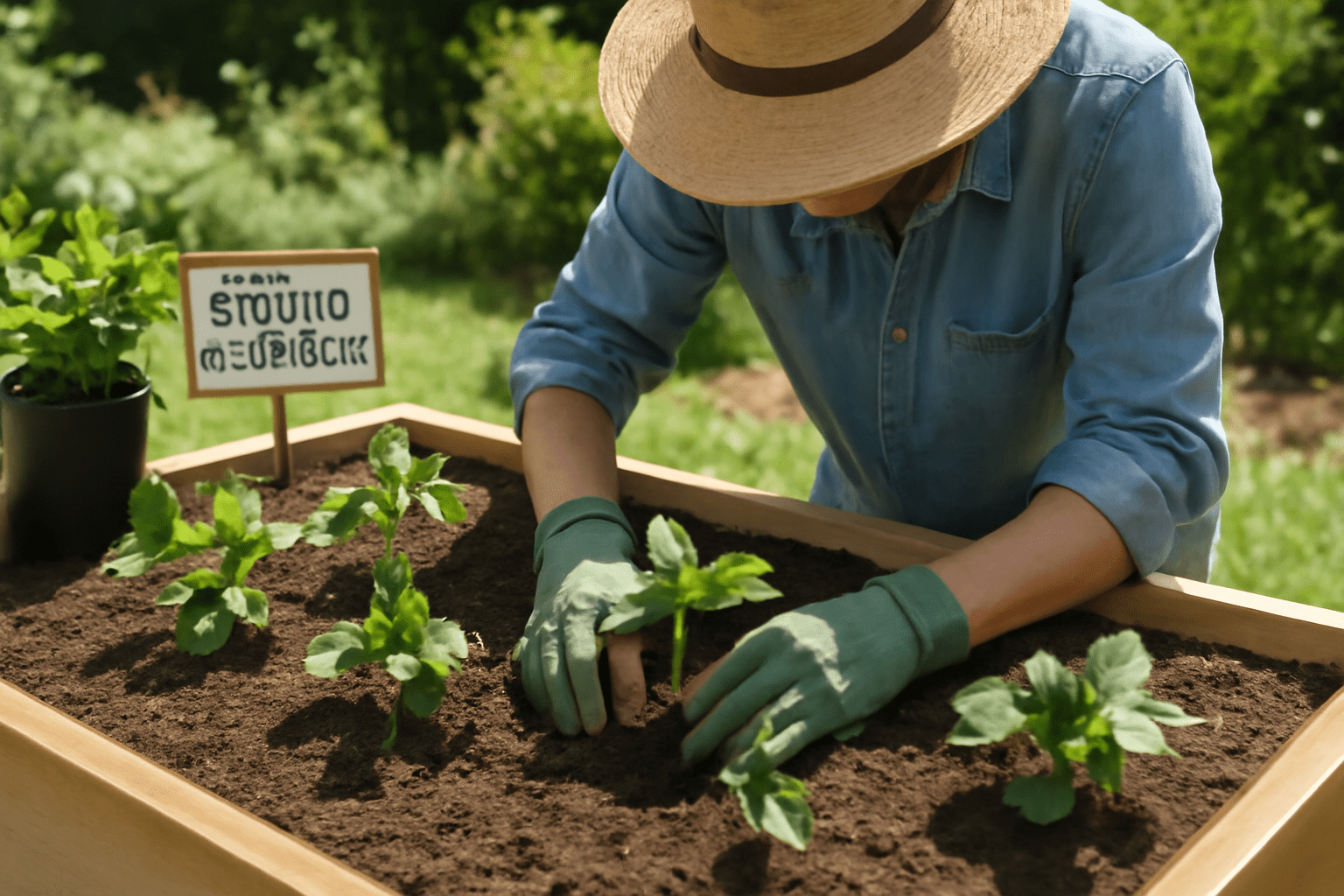
4. Mulching for Protection 
Mulch is your strawberry plant’s best friend! After planting, add a 2-3 inch layer of mulch around the base of the plants. This helps retain moisture, prevents weeds from sprouting, and protects the roots during hot summer days. Straw, wood chips, or even pine needles make great mulch options. Plus, it gives your garden a neat, tidy look!
5. Watering and Care 
Keep your strawberry plants consistently moist, but not soggy. Water at the base of the plants to avoid wetting the leaves, which can encourage disease. Early morning is the best time to water, so the plants can dry off before evening. Sequoia strawberries benefit from regular feeding, so fertilize them with a balanced, slow-release fertilizer in the spring as they begin to grow.
6. Support the Plants 
Sequoia strawberries are known for their runners, or “daughter plants,” which spread out from the main plant. You can let them spread naturally, or you can trim the runners to keep the plants tidy and direct more energy into producing fruit. If you’re growing strawberries in containers or hanging baskets, consider adding supports to keep the plants from trailing on the ground.
7. Watch for Pests and Diseases 
While Sequoia strawberries are hardy, they can be susceptible to pests like aphids, spider mites, and slugs. Keep an eye on your plants and remove pests manually or use organic pest control methods like neem oil. If you notice yellowing leaves or spots, it could be a sign of fungal disease—apply an organic fungicide to prevent further spread.
With these simple steps, your Sequoia strawberries will be well on their way to providing you with sweet, juicy fruit throughout the season! 
Caring for Sequoia Strawberries 

Taking care of Sequoia strawberries is a rewarding experience, as these sweet, everbearing plants thrive with just a little attention. Follow these straightforward tips to keep your Sequoia strawberry plants healthy and productive all season long!
1. Choose the Right Location 
Sequoia strawberries love the sun! 
2. Water Properly 
Consistent moisture is key for Sequoia strawberries, but they don’t like soggy roots. Water your plants deeply and regularly, especially during dry spells. Ensure the soil is well-draining to prevent water from sitting around the roots, which can lead to rot.

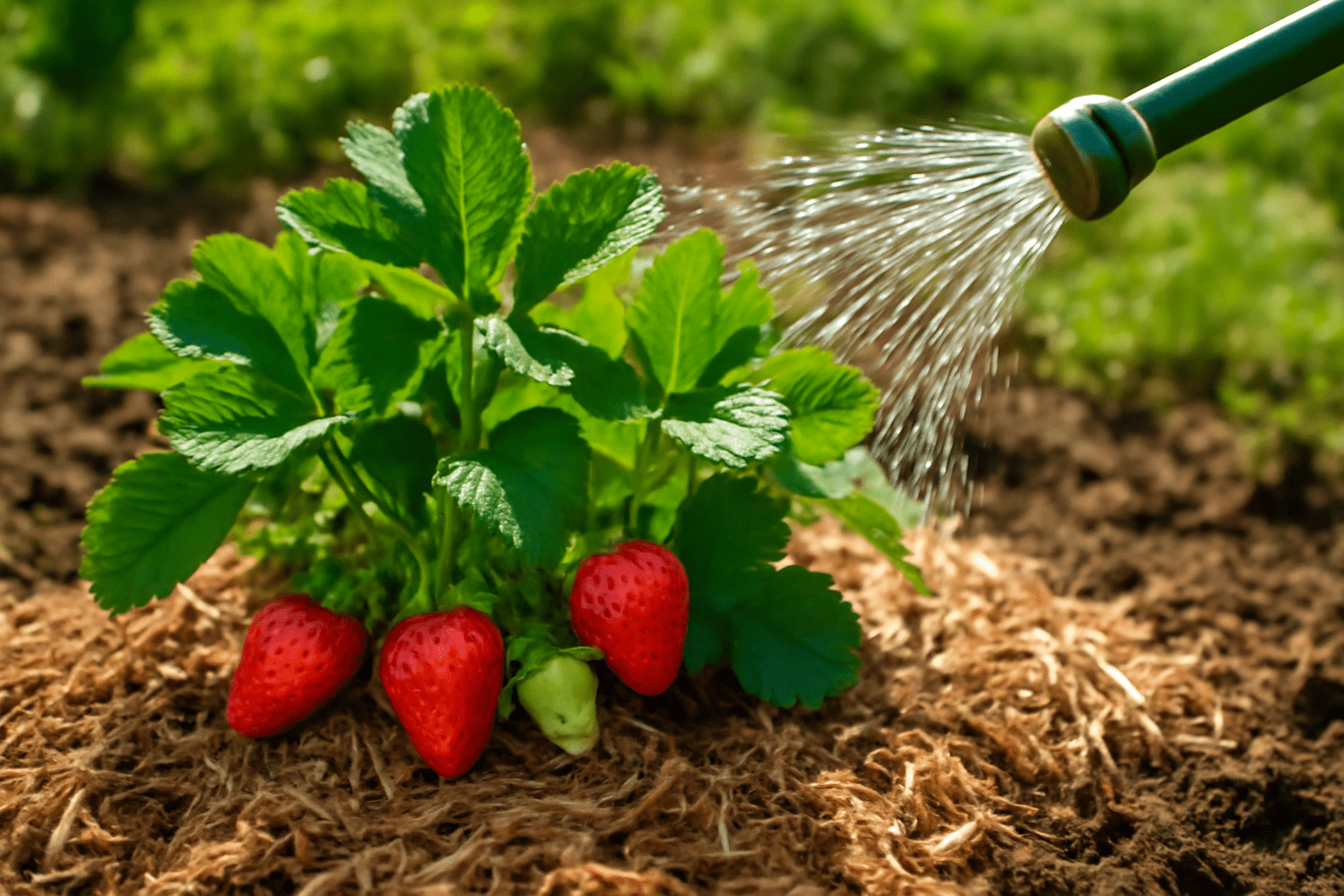
3. Feed Them Right 
Strawberries are heavy feeders! Use a balanced, slow-release fertilizer designed for berries. Apply in early spring when new growth starts, and again in late summer after the first round of harvesting. This helps keep your Sequoia plants strong and productive.

4. Mulch for Moisture & Protection 
Mulching around your plants with straw, leaves, or grass clippings helps retain moisture, keep weeds at bay, and protect the berries from soil-borne diseases. Mulch also keeps the fruit clean and reduces the risk of rot. Aim for a 2–3 inch layer of mulch around your plants.
5. Pruning and Harvesting 
Sequoia strawberries are everbearing, meaning they produce fruit throughout the growing season. To keep your plants healthy and productive, remove dead or yellowing leaves regularly. Trim any runners (long stems that grow away from the plant) to encourage stronger fruit production.
When it’s time to harvest, pick berries when they are fully ripe—bright red and slightly soft to the touch. Don’t wait too long, as overripe fruit can attract pests and spoil faster. Harvest often to keep your plants producing more berries!
6. Watch Out for Pests and Diseases 

Sequoia strawberries can attract pests like aphids and slugs. Keep an eye out for any signs of infestation. If you spot pests, use a mild insecticidal soap or neem oil to treat them. Regularly check for signs of fungal diseases like powdery mildew. If you notice any issues, remove affected leaves and avoid overhead watering, which can spread diseases.

7. Winter Care 
In colder climates, protect your Sequoia strawberry plants from harsh winter weather. Cover them with a thick layer of mulch in late fall to insulate the roots. If you’re in a very cold area, consider placing row covers or planting in raised beds to give your plants extra protection from freezing temperatures.
By following these simple steps, you’ll ensure that your Sequoia strawberry plants thrive and produce delicious berries throughout the growing season. Happy gardening!
Managing Pests and Diseases 

Growing Sequoia strawberries can be incredibly rewarding, but like all plants, they’re not immune to pests and diseases. Managing these issues promptly will help you keep your plants healthy and ensure a delicious, abundant harvest. Here’s how you can tackle common problems without the stress!
1. Preventative Measures: Your First Line of Defense 
The best way to fight pests and diseases is to prevent them in the first place. Start with healthy soil, proper watering, and good plant spacing. This reduces stress on your strawberries and helps them resist pests.
- Good Drainage: Make sure your soil drains well to prevent fungal diseases like mold or root rot.
- Healthy Soil: Use organic matter and compost to enrich the soil. Strong, nutrient-rich soil strengthens the plants.
- Air Circulation: Space your plants well apart to allow air to flow freely. This helps prevent fungal growth and keeps pests at bay.
2. Common Pests to Watch For 

While Sequoia strawberries are fairly resistant, there are a few common pests you might encounter. Here’s how to handle them:
- Aphids: These tiny insects can cause leaves to curl and turn yellow. Spray them with a mixture of water and mild dish soap to knock them off. Natural predators like ladybugs can also help keep aphid numbers in check.
- Slugs and Snails: These little critters love to feast on strawberry leaves. To control them, use copper tape or sprinkle diatomaceous earth around your plants. You can also set up beer traps (slugs love beer!).
- Spider Mites: Look for tiny webs on your plants. If you spot them, rinse the leaves with a strong stream of water. You can also use insecticidal soap if the problem is severe.
3. Common Diseases and How to Handle Them 

Strawberries are susceptible to several diseases, but most can be prevented with proper care. Here’s how to spot and treat common issues:
- Powdery Mildew: This fungal disease leaves a white, powdery substance on your plants. To combat it, remove infected leaves and ensure your plants are not overcrowded. A fungicide or neem oil can also help control it.
- Gray Mold (Botrytis): This fungus thrives in damp conditions. Make sure your plants are dry in the evenings, and remove any affected fruit immediately. Mulching and spacing your plants also help reduce the spread.
- Verticillium Wilt: This soil-borne disease causes wilting, yellowing, and stunted growth. Avoid planting strawberries in soil where you’ve grown tomatoes or peppers recently. If the disease takes hold, it may be best to remove and destroy the affected plants to prevent spread.
4. Natural Solutions and Organic Control 

If you prefer organic methods, here are a few safe options to consider:
- Neem Oil: A natural pesticide that targets a variety of pests and fungi. It’s effective and safe for your strawberries.
- Beneficial Insects: Release ladybugs, lacewings, or predatory mites into your garden. These natural predators will help control aphids, mites, and other pests.
- Companion Planting: Plant herbs like basil or marigolds nearby to deter insects and encourage healthy growth.
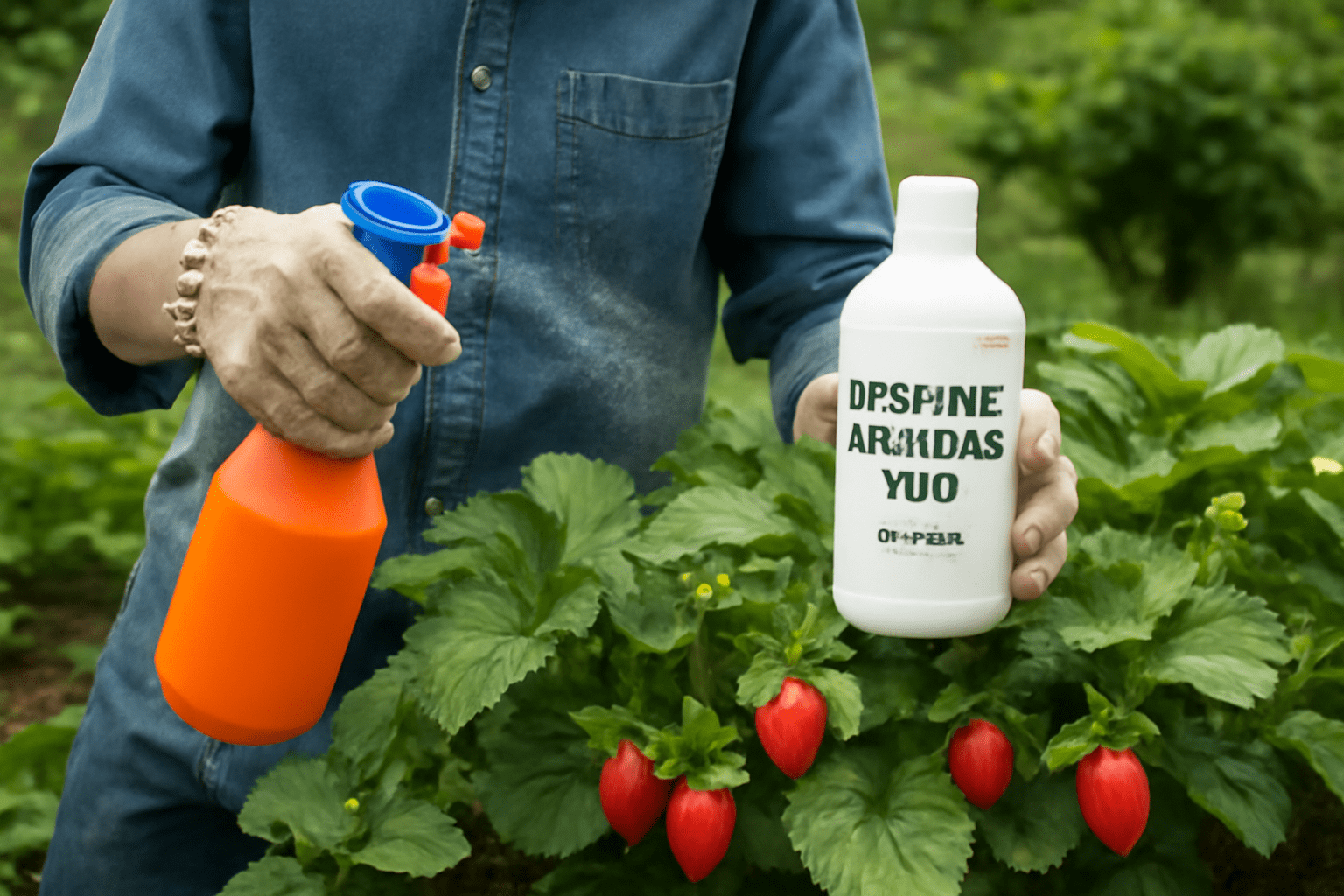
5. When to Use Pesticides 
If pests or diseases get out of hand, consider using pesticides as a last resort. Choose organic or eco-friendly options to minimize harm to your garden and the environment. Always follow the instructions carefully and apply in the early morning or late evening to avoid harming beneficial insects.
By staying vigilant and following these practical tips, you’ll keep your Sequoia strawberries thriving! Happy gardening and here’s to a bountiful harvest!
Harvesting Sequoia Strawberries 
Harvesting Sequoia strawberries is an exciting and rewarding step in the growing process! Once your plants are healthy and producing fruit, you’ll want to pick them at the perfect time for the best taste and texture. Here’s everything you need to know to make the most out of your strawberry harvest:
1. When to Harvest Sequoia Strawberries 
Sequoia strawberries are ready to harvest when they’re fully ripe. Look for berries that are deep red, firm to the touch, and slightly shiny. You’ll typically see the first harvest in late spring or early summer. The best time to pick strawberries is in the morning, after the dew has dried but before the heat of the day sets in. This ensures the berries are cool and at their peak flavor.
2. How to Harvest: The Right Technique 
Be gentle when picking your strawberries! To avoid damaging the plants, grasp the berry gently with your fingers and twist or cut the stem just above the fruit. Leave a small portion of the stem attached to the berry. Avoid pulling the berries off with too much force, as this could harm the plant and affect future yields.
3. Harvesting Frequency: Pick Regularly! 
Sequoia strawberries are ever-bearing, meaning they produce fruit continuously throughout the growing season. Check your plants every 2-3 days and pick any ripe berries. By harvesting frequently, you’ll encourage the plant to produce even more fruit, ensuring a bountiful harvest over time!
4. Signs of Overripe Strawberries 
If you leave your strawberries on the plant too long, they can become overripe. This makes them mushy and less flavorful. Overripe strawberries may also attract pests or mold. Keep an eye on your crop, and if you spot any berries that are starting to soften or turn a darker shade of red, it’s time to pick them!
5. Post-Harvest Care: Storing Your Strawberries 
Once you’ve harvested your Sequoia strawberries, handle them with care. Store them in a shallow container lined with paper towels to absorb excess moisture. Keep them in the refrigerator to maintain freshness. For longer storage, you can freeze the berries for smoothies, jams, or baking later.
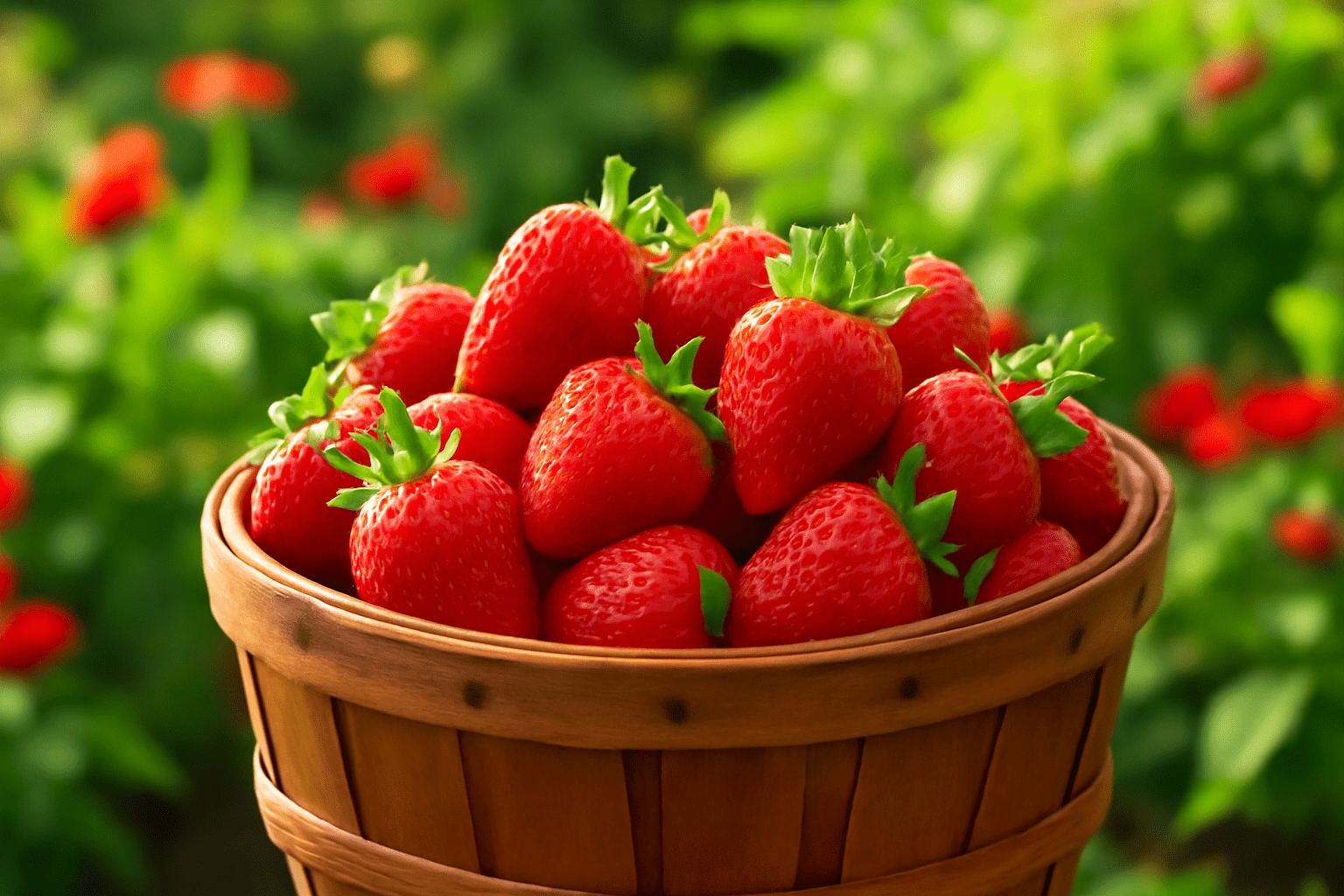
6. What to Do After Harvest: Keep the Plants Thriving 
After a successful harvest, take good care of your Sequoia strawberry plants to ensure continued production. Trim away any dead or damaged leaves, and keep the soil well-watered and mulched. Regular feeding with a balanced fertilizer will help your plants stay strong and produce more delicious berries.
By following these simple tips, you’ll enjoy a steady supply of sweet, juicy Sequoia strawberries all season long! Happy harvesting!
Troubleshooting Common Problems 
Growing Sequoia strawberries can be a rewarding experience, but sometimes things don’t go as planned. Don’t worry! Here are some common problems you might encounter and how to fix them:
1. Yellowing Leaves 
If you notice the leaves of your Sequoia strawberry plants turning yellow, it could be a sign of nutrient deficiency, overwatering, or pests.
How to fix it:
- Nutrient Deficiency: Add a balanced fertilizer or compost to provide essential nutrients like nitrogen and iron.
- Overwatering: Ensure your plants have well-drained soil. Water only when the top inch of soil feels dry.
- Pests: Check for tiny pests, such as aphids, that can cause damage. Use insecticidal soap or neem oil to treat the plants.
2. Poor Fruit Production 
If your Sequoia strawberries are growing healthy foliage but producing few or no fruits, stress may be the culprit.
How to fix it:
- Too Much Fertilizer: Excess nitrogen can lead to lush leaves but few fruits. Switch to a fertilizer high in potassium and phosphorus to promote flowering and fruiting.
- Inadequate Pollination: Sequoia strawberries are self-pollinating, but pollinators like bees can help. If your garden has few bees, gently shake the plants to assist pollination.
- Too Much Shade: These strawberries need at least 6-8 hours of sunlight daily. Ensure they’re planted in a sunny spot for optimal fruit production.
3. Wilting Plants 
Wilting can be caused by a variety of issues, from diseases to environmental stress.
How to fix it:
- Overwatering or Underwatering: Check the soil’s moisture level. Make sure it’s not soggy or too dry. Maintain a consistent watering schedule.
- Root Rot: If wilting occurs with a foul smell, the roots might be rotting due to poor drainage. Ensure your container or garden bed has proper drainage and avoid waterlogging.
4. Leaf Spot or Mold 
Spots, mold, or mildew on your strawberry leaves can affect plant health and productivity.
How to fix it:
- Fungal Diseases: Remove any affected leaves and ensure good air circulation around your plants. If the problem persists, treat with a fungicide like copper sulfate or a natural remedy like baking soda mixed with water.
- Maintain Cleanliness: Always clear dead plant material from around your strawberries to prevent fungal spores from spreading.
5. Pests 
Sequoia strawberry plants can attract common garden pests like slugs, snails, and aphids.
How to fix it:
- Slugs & Snails: Set up traps with beer or crushed eggshells around the plants. You can also use copper tape or natural predators like birds to help reduce the population.
- Aphids & Other Insects: Spray the plants with a mixture of water and dish soap, or use neem oil to deter pests without harming the plants.
6. Weak Growth or Stunted Plants 
If your plants seem to struggle with growth, it’s often linked to soil quality or environmental stress.
How to fix it:
- Soil Quality: Ensure your soil is rich in organic matter. Add compost to improve texture and nutrient content.
- Temperature Stress: Sequoia strawberries grow best in mild temperatures. Protect them from extreme heat by providing shade or using mulch to maintain soil moisture and coolness.
7. Birds Eating Your Berries 
Birds love ripe strawberries, but you can prevent them from snacking on your harvest.
How to fix it:
- Netting: Use bird netting around your plants to keep the little thieves away.
- Scare Tactics: Hang reflective tape, old CDs, or even aluminum foil strips near your plants to scare birds off.
8. Discolored or Deformed Fruit 
Sometimes, the strawberries may develop unusual colors or deformities.
How to fix it:
- Nutrient Imbalance: An imbalance in nutrients, especially calcium, can cause misshapen fruits. Use a calcium-rich fertilizer to promote healthy fruit development.
- Temperature Fluctuations: Extreme heat or cold can affect fruit formation. Try to provide some shade during heatwaves or cover the plants when temperatures drop too low.
By addressing these common issues with the right solutions, you’ll ensure that your Sequoia strawberry plants thrive and reward you with a bountiful harvest! Happy gardening!
Conclusion
Growing Sequoia strawberries is a rewarding experience that offers both delicious results and a sense of accomplishment. By following the steps in this guide—choosing the right location, properly planting, providing consistent care, and protecting your plants from pests and diseases—you can enjoy a bountiful harvest of sweet, juicy strawberries year after year.

Remember, patience is key. Sequoia strawberries may take a bit of time to establish themselves, but with the right attention and nurturing, they’ll reward you with some of the best fruit you’ve ever tasted. Whether you’re a seasoned gardener or just starting, growing Sequoia strawberries is an enjoyable and fulfilling way to add fresh, healthy fruit to your garden.
Now that you have the knowledge to get started, it’s time to plant your Sequoia strawberries and watch them thrive! Happy gardening, and enjoy the sweet rewards of your efforts!
Frequently Asked Questions(FAQ)
How long does it take for Sequoia strawberries to produce fruit?
Sequoia strawberries typically start producing fruit in their second growing season. However, you may see a small harvest in the first year if the plants are well-cared for, especially in warmer climates.
Can Sequoia strawberries be grown in containers?
Yes, Sequoia strawberries can thrive in containers, as long as the container is large enough to accommodate their root system and has good drainage. Ensure the container gets plenty of sunlight for the best results.
What is the best time to plant Sequoia strawberries?
The best time to plant Sequoia strawberries is early spring or late fall when the weather is mild. Planting during these seasons gives the plants enough time to establish before the heat of summer or the cold of winter.
How often should I water Sequoia strawberry plants?
Sequoia strawberries need consistent moisture, so water them regularly, especially during dry spells. Aim to keep the soil evenly moist but not soggy, and water at the base of the plant to avoid wetting the leaves.
Do Sequoia strawberry plants need a lot of sunlight?
Yes, Sequoia strawberries need at least 6-8 hours of direct sunlight per day to grow strong and produce sweet, juicy fruit. Make sure to plant them in a spot where they will receive plenty of sunlight throughout the day.
Can I grow Sequoia strawberries in partial shade?
While Sequoia strawberries prefer full sun, they can tolerate partial shade, especially in hotter climates where some afternoon shade can protect them from the heat. However, they will produce better yields with more sunlight.
How do I manage the runners of Sequoia strawberry plants?
Sequoia strawberries produce runners, which are small offshoots that can create new plants. While it’s okay to let some runners grow for propagation, it’s best to remove excess runners to direct the plant’s energy toward producing larger fruits.
What should I do if my Sequoia strawberries have yellowing leaves?
Yellowing leaves can be a sign of several issues, including nutrient deficiencies or overwatering. Check your watering schedule and ensure the soil is well-drained. You may also need to fertilize the plants with a balanced fertilizer to address nutrient gaps.











